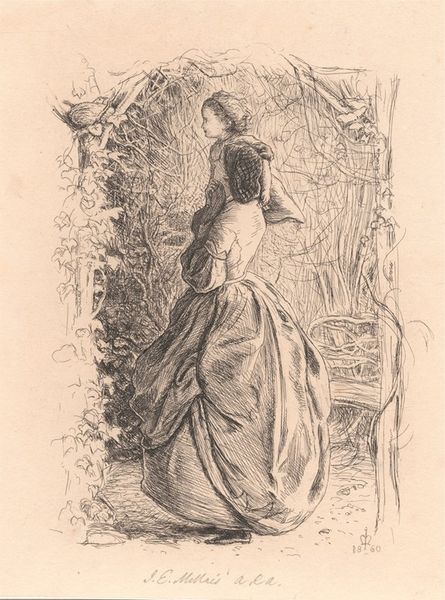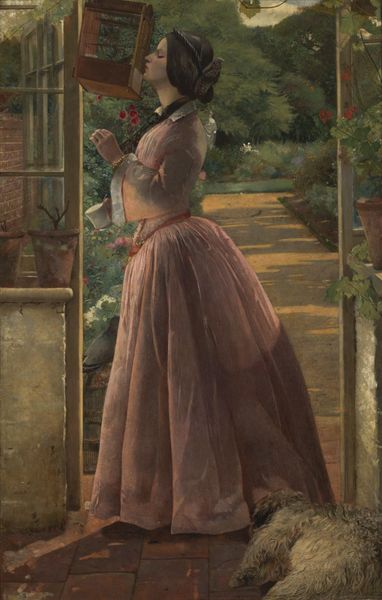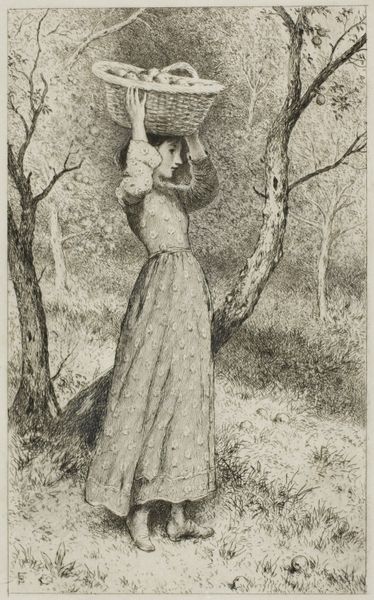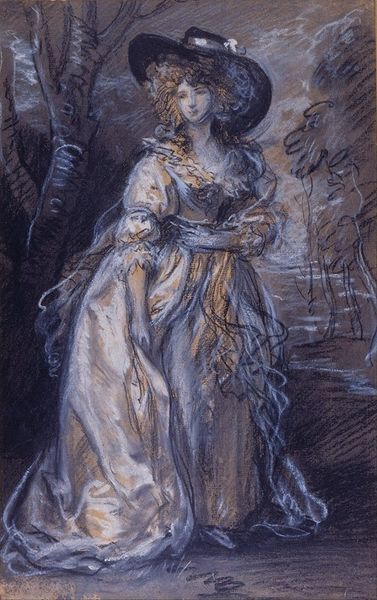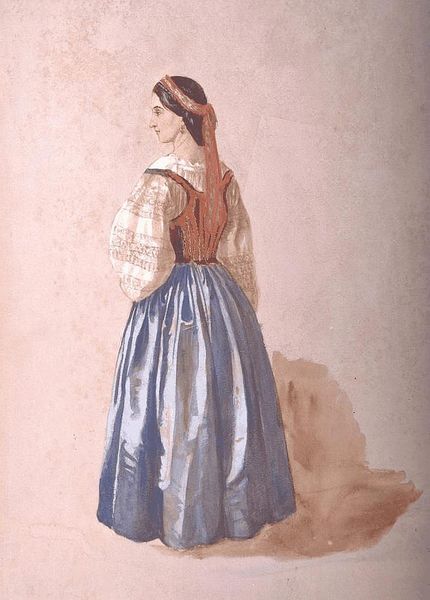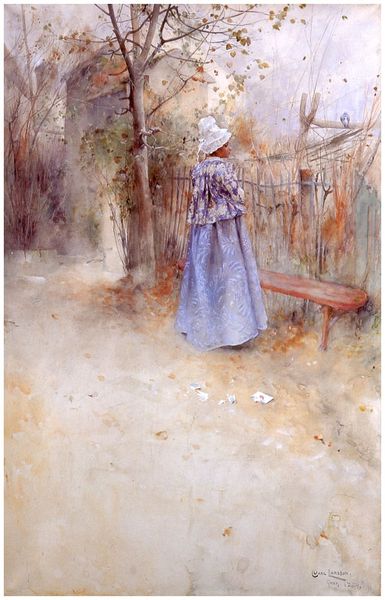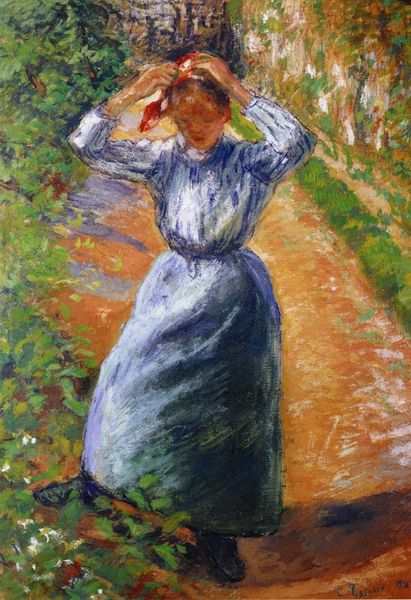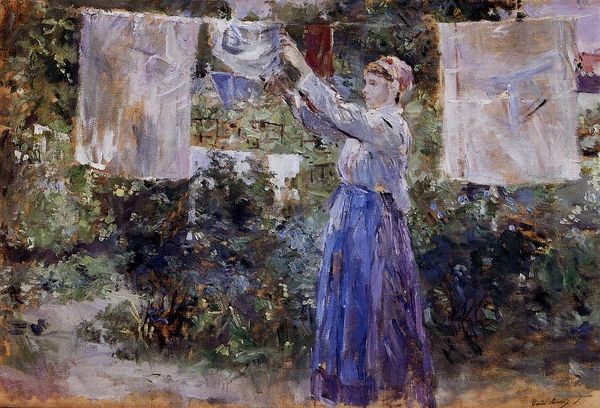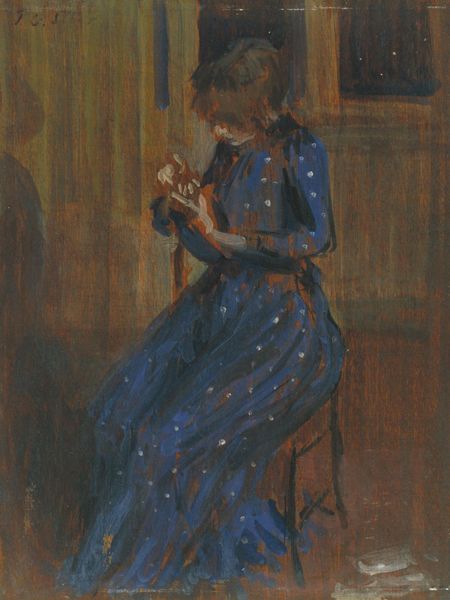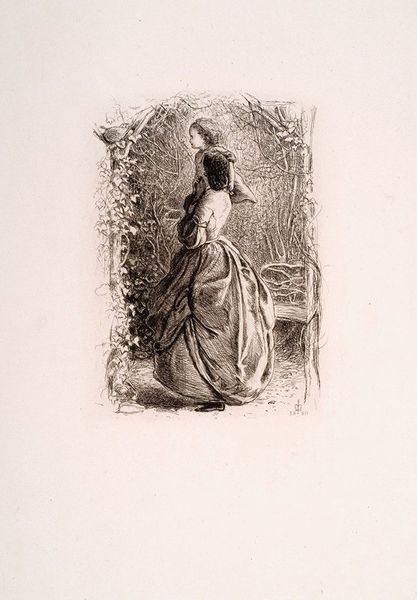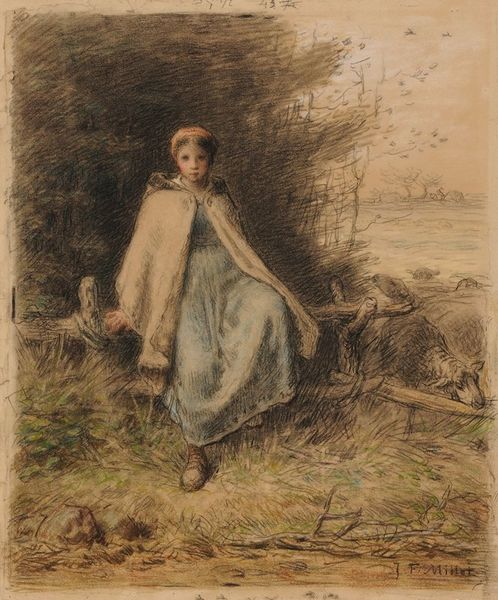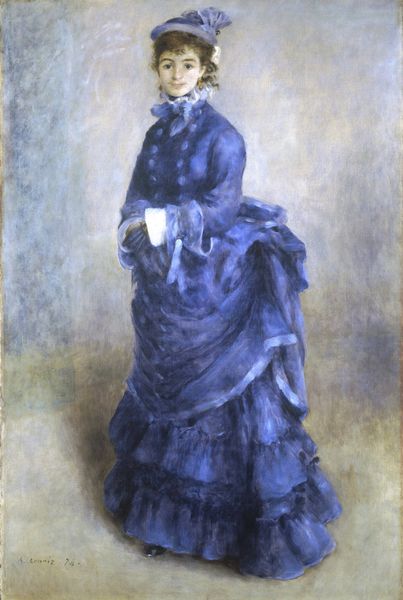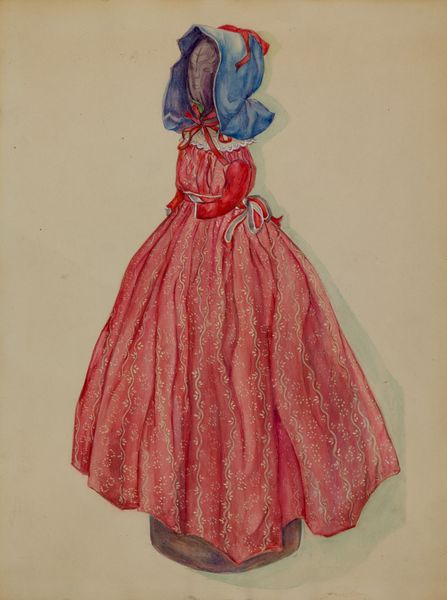
Copyright: Public Domain: Artvee
Curator: Millais’ watercolour and gouache work from 1863, “Spring Time,” presents a full-length portrait of a woman and child within a lush, almost overwhelming garden scene. Editor: The initial impact is striking – a pre-Raphaelite dreamscape, yet almost claustrophobic. The deep blues of the woman’s dress and the riotous greens vie for dominance. It’s a garden, yet feels strangely enclosed. Curator: Considering the material conditions, Millais chose watercolour and gouache, layering these delicate materials to achieve a richness in tone and depth atypical for the medium. It's an interesting contrast to the industrialized society encroaching on the pre-Raphaelite ideals of nature. The red striped petticoat could even be seen as an element of modernity amidst the romantic idealisation. Editor: Precisely, and looking more closely, the composition guides us. The woman’s upward gaze leads our eye toward the child on her shoulders, and then is pulled even higher. It directs us almost out of the composition, creating an interesting directional flow. Notice the very intricate detail he includes in the rendering of folds in the material in contrast to other less-defined elements? Curator: The fact that Millais, associated with a forward-looking artistic group, uses such traditional modes of representation also indicates how ingrained older, often nostalgic approaches, still were within society and art production itself at this moment in the early 1860's. The very notion of the 'timeless' Spring could be seen as a way of rejecting some of the faster and harsher impacts of modernity. Editor: Good point. And those almost excessively green foliage forms above them – could they symbolize anything about shelter and protection? What kind of world is she showing to the child, what view, and from where, through what structure? Are we inside a structure? The color palette here seems far more intense than simply realistic or even decorative, it points to an artificial or idealized rendition. Curator: What I take away most is how it represents this artistic intersection of labour in production, artistic ideals and subject, while showing an intriguing contrast in modernising Victorian life and older nostalgic longings. Editor: For me, this work encapsulates the power of direction, layering, and contrast, resulting in the articulation of this dream-like state and this visual tension, this spring-like moment that pulls us upwards in a captivating yet somehow claustrophobic, kind of space.
Comments
No comments
Be the first to comment and join the conversation on the ultimate creative platform.
